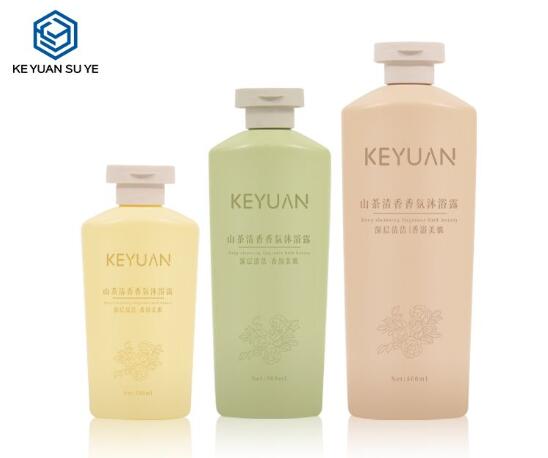High-density polyethylene (HDPE) is a versatile and widely used plastic material, especially popular in the packaging industry. Among its many applications, HDPE is frequently chosen for manufacturing shampoo bottles. This article explores the reasons why HDPE is the preferred material for shampoo bottles, highlighting its advantages in terms of durability, safety, cost-effectiveness, and environmental impact.

One of the primary reasons HDPE is used for shampoo bottles is its exceptional durability and strength. HDPE is a high-density material, meaning it has a strong molecular structure that can withstand significant stress without cracking or breaking. This makes it ideal for packaging products like shampoo, which are often stored in humid environments like bathrooms and subjected to frequent handling.
Shampoo bottles made from HDPE are resistant to impact, meaning they can be dropped without easily shattering or leaking. This durability ensures that the product remains safe and intact during transportation, on store shelves, and in consumers' homes, providing a longer shelf life and reducing the risk of product loss due to damaged packaging.
Another key advantage of HDPE is its excellent chemical resistance. Shampoos and other personal care products often contain a variety of active ingredients, some of which can be harsh or reactive. HDPE is highly resistant to a wide range of chemicals, including acids, bases, and solvents. This resistance ensures that the plastic does not react with the shampoo, preserving the integrity of the product and preventing contamination.
The non-reactive nature of HDPE makes it a safe choice for packaging, as it prevents harmful interactions between the container and its contents. This is particularly important for maintaining the quality and safety of personal care products that are used on the skin and hair.
HDPE is also a cost-effective material, which is another reason for its widespread use in shampoo bottles. The production process for HDPE is relatively efficient, and the raw material itself is inexpensive compared to other plastics or packaging materials like glass or aluminum. This affordability makes it possible for manufacturers to produce shampoo bottles at a lower cost, which can then be passed on to consumers through more affordable product pricing.
In addition to its low production costs, HDPE is lightweight, which reduces shipping costs. The lighter weight of HDPE bottles compared to glass or metal containers means that more units can be transported at once, lowering the overall transportation expenses. These savings contribute to the overall cost-effectiveness of HDPE as a packaging material.
While plastic packaging is often criticized for its environmental impact, HDPE stands out as a more sustainable option compared to many other plastics. HDPE is highly recyclable, meaning that shampoo bottles made from this material can be collected, processed, and turned into new products, reducing the demand for virgin plastic. Many recycling programs accept HDPE, making it easier for consumers to dispose of used bottles in an environmentally responsible manner.
Additionally, HDPE has a lower environmental footprint in its production and transportation compared to heavier materials like glass. The energy required to produce and transport HDPE bottles is less, resulting in reduced carbon emissions. Manufacturers can further enhance the sustainability of HDPE bottles by using recycled HDPE (rHDPE) in their production, contributing to a circular economy.
HDPE's versatility in design is another reason it is favored for shampoo bottles. HDPE can be easily molded into a variety of shapes and sizes, allowing manufacturers to create unique and attractive bottle designs that stand out on store shelves. Whether the goal is to produce a sleek, modern look or a functional, ergonomic shape, HDPE can be adapted to meet these design requirements.
Moreover, HDPE can be colored and textured in different ways, providing additional branding opportunities for companies. This versatility in design helps businesses create distinctive packaging that appeals to consumers while maintaining the practical benefits of HDPE.
HDPE is used for shampoo bottles due to its durability, chemical resistance, cost-effectiveness, environmental benefits, and versatility in design. These qualities make it an ideal material for safely and efficiently packaging personal care products.
Founded in 2012, KEYUAN Plastic Bottle Factory in Guangzhou, China, specializes in designing, developing, and producing plastic and cosmetic bottles. With over 30,000 m² of space, 300 employees, and 20 designers, we serve global customers, offering both small and bulk packaging solutions. KEYUAN provides custom mold design and decorating services, and is GRS certified, emphasizing sustainable production and environmental responsibility.
Keyuan specializes in producing HDPE shampoo bottles for global customers.
Our capabilities include:
Wide range of standard shapes and sizes (from 200 ml to 1000 ml)
Custom mold development for exclusive bottle designs
HDPE, colored HDPE, and recycled HDPE options
Pump, flip-top, disc-cap, and screw-cap compatibility
Surface treatments such as soft-touch, matte, UV coating, and screen printing
Strict quality control, including leak tests, drop tests, and structural inspections
We ensure every bottle meets the requirements of modern hair-care packaging.
To support better recycling results:
We avoid unnecessary additives that reduce recyclability
We use consistent materials for improved sorting
We provide options for recycled HDPE content
Brands looking to improve sustainability metrics can choose bottles with high recycled content, helping reduce carbon footprint and plastic waste.
Our HDPE bottles are widely used for:
Daily shampoo and conditioner
Salon and professional hair-care products
Body wash and liquid soap
Travel-size and hotel amenities
Refillable product lines
Family-size or bulk packaging
HDPE offers a dependable solution for both economy and premium product ranges.
If you are considering HDPE for your packaging needs or would like more information on sourcing this material, it is important to consult with a knowledgeable supplier. For further details or to discuss your specific requirements, please don't hesitate to contact us.
Copyright © Guangzhou Keyuan Plasticware Co., Ltd. All Rights Reserved Sitemap